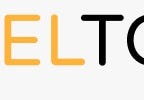Explained: Digital Signatures Part 1
A digital signature is a mathematical technique used to validate the authenticity and integrity of a message, software or digital document. As the digital equivalent of a handwritten signature or stamped seal, a digital signature offers far more inherent security, and it is intended to solve the problem of tampering and impersonation in digital communications.
Digital signatures can provide the added assurances of evidence of origin, identity and status of an electronic document, transaction or message and can acknowledge informed consent by the signer.
In many countries, including the United States, digital signatures are considered legally binding in the same way as traditional document signatures.
How digital signatures work
Digital signatures are based on public key cryptography, also known as asymmetric cryptography. Using a public key algorithm, such as RSA, one can generate two keys that are mathematically linked: one private and one public. (for more on
Digital signatures work because public key cryptography depends on two mutually authenticating cryptographic keys. The individual who is creating the digital signature uses their own private key to encrypt signature-related data; the only way to decrypt that data is with the signer’s public key. This is how digital signatures are authenticated.
Digital signature technology requires all the parties to trust that the individual creating the signature has been able to keep their own private key secret. If someone else has access to the signer’s private key, that party could create fraudulent digital signatures in the name of the private key holder.
How to create a digital signature
To create a digital signature, signing software — such as an email program — creates a one-way hash of the electronic data to be signed. The private key is then used to encrypt the hash. The encrypted hash — along with other information, such as the hashing algorithm — is the digital signature.
The reason for encrypting the hash instead of the entire message or document is that a hash function can convert an arbitrary input into a fixed length value, which is usually much shorter. This saves time as hashing is much faster than signing.
The value of a hash is unique to the hashed data. Any change in the data, even a change in a single character, will result in a different value. This attribute enables others to validate the integrity of the data by using the signer’s public key to decrypt the hash.
If the decrypted hash matches a second computed hash of the same data, it proves that the data hasn’t changed since it was signed. If the two hashes don’t match, the data has either been tampered with in some way — integrity — or the signature was created with a private key that doesn’t correspond to the public key presented by the signer — authentication.
A digital signature can be used with any kind of message — whether it is encrypted or not — simply so the receiver can be sure of the sender’s identity and that the message arrived intact. Digital signatures make it difficult for the signer to deny having signed something — assuming their private key has not been compromised — as the digital signature is unique to both the document and the signer and it binds them together. This property is called nonrepudiation.
Digital signatures are not to be confused with digital certificates. A digital certificate, an electronic document that contains the digital signature of the issuing certificate authority, binds together a public key with an identity and can be used to verify that a public key belongs to a particular person or entity.
Most modern email programs support the use of digital signatures and digital certificates, making it easy to sign any outgoing emails and validate digitally signed incoming messages. Digital signatures are also used extensively to provide proof of authenticity, data integrity and nonrepudiation of communications and transactions conducted over the internet.
Stay tuned for part 2 of the Digital Signatures!
